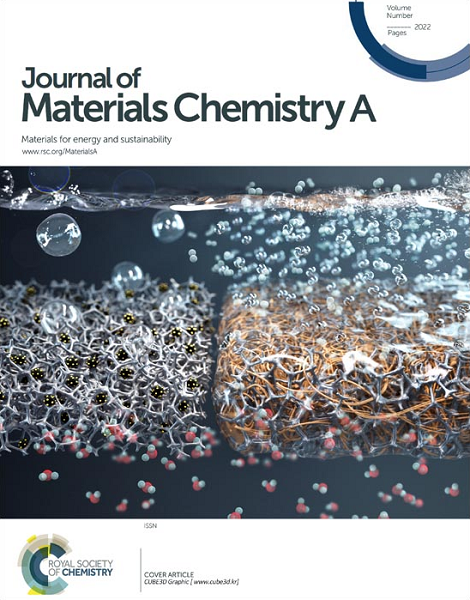Amine-functionalized CNTs@mSiO2 with short radical mesochannels for fast and efficient CO2 capture
IF 9.5
2区 材料科学
Q1 CHEMISTRY, PHYSICAL
引用次数: 0
Abstract
Amine functionalized adsorbents exhibit significant potential for CO2 capture due to their high efficiency and selectivity. However, their practical application remains constrained by the limited adsorption capacity and slow adsorption kinetics. Herein, we demonstrated an ethylenediamine (ED) functionalized mesoporous silica coated carbon nanotubes (CNTs@mSiO2-ED) composites for fast and efficient CO2 capture. The novel adsorbent was synthesized through a two-step process, consisting of the synthesis of mesoporous silica coated carbon nanotubes (CNTs@mSiO2) as amine carriers via an interfacial self-assembly strategy, followed by amine functionalization using a vapor deposition method. Both the carriers and final adsorbents possess abundant short radical mesochannels, offering direct and ultra-short diffusion paths for amine during functionalism and CO2 for adsorption. As a result, the CNTs@mSiO2-ED adsorbent achieved a maximum CO2 adsorption capacity of 68 mL g-1 (~ 3 mmol g-1, at 298 K, 1 bar) and facile uptake of CO2 reaching a t50 (being the time to achieve 50% of the maximum adsorption capacity) of 1.93 min, 1.70 times higher and 1.32 times faster than for ED-functionalized SBA-15, respectively. This work opens up a new avenue for the design of CO2 adsorption materials to overcome the adsorption and reaction kinetics limitations of other solid porous materials envisaged.胺功能化CNTs@mSiO2与短自由基中间通道快速和有效的CO2捕获
胺功能化吸附剂由于其高效率和选择性而具有显著的CO2捕获潜力。然而,它们的实际应用仍然受到有限的吸附容量和缓慢的吸附动力学的限制。在此,我们展示了一种乙二胺(ED)功能化的介孔二氧化硅涂层碳纳米管(CNTs@mSiO2-ED)复合材料,用于快速有效地捕获二氧化碳。新型吸附剂的合成分为两步,首先通过界面自组装策略合成介孔二氧化硅包覆的碳纳米管(CNTs@mSiO2)作为胺载体,然后使用气相沉积方法进行胺功能化。载体和最终吸附剂都具有丰富的短自由基中通道,为胺在官能团作用和CO2吸附过程中提供了直接和超短的扩散路径。结果表明,CNTs@mSiO2-ED吸附剂在298 K, 1 bar条件下的最大CO2吸附量为68 mL g-1 (~ 3 mmol g-1),吸附CO2的t50(达到最大吸附量50%的时间)为1.93 min,比ed功能化的SBA-15分别快1.70倍和1.32倍。这项工作为设计二氧化碳吸附材料开辟了一条新的途径,以克服其他固体多孔材料的吸附和反应动力学限制。
本文章由计算机程序翻译,如有差异,请以英文原文为准。
求助全文
约1分钟内获得全文
求助全文
来源期刊

Journal of Materials Chemistry A
CHEMISTRY, PHYSICAL-ENERGY & FUELS
CiteScore
19.50
自引率
5.00%
发文量
1892
审稿时长
1.5 months
期刊介绍:
The Journal of Materials Chemistry A, B & C covers a wide range of high-quality studies in the field of materials chemistry, with each section focusing on specific applications of the materials studied. Journal of Materials Chemistry A emphasizes applications in energy and sustainability, including topics such as artificial photosynthesis, batteries, and fuel cells. Journal of Materials Chemistry B focuses on applications in biology and medicine, while Journal of Materials Chemistry C covers applications in optical, magnetic, and electronic devices. Example topic areas within the scope of Journal of Materials Chemistry A include catalysis, green/sustainable materials, sensors, and water treatment, among others.
 求助内容:
求助内容: 应助结果提醒方式:
应助结果提醒方式:


